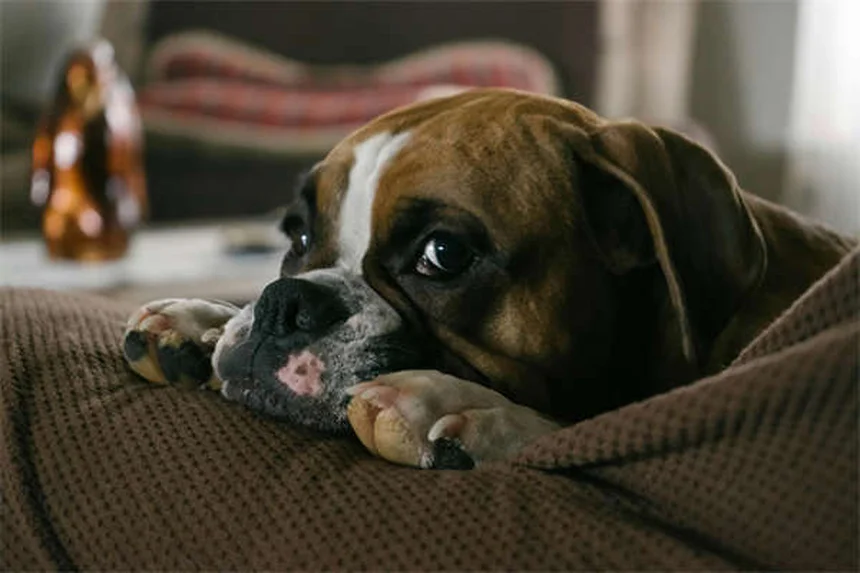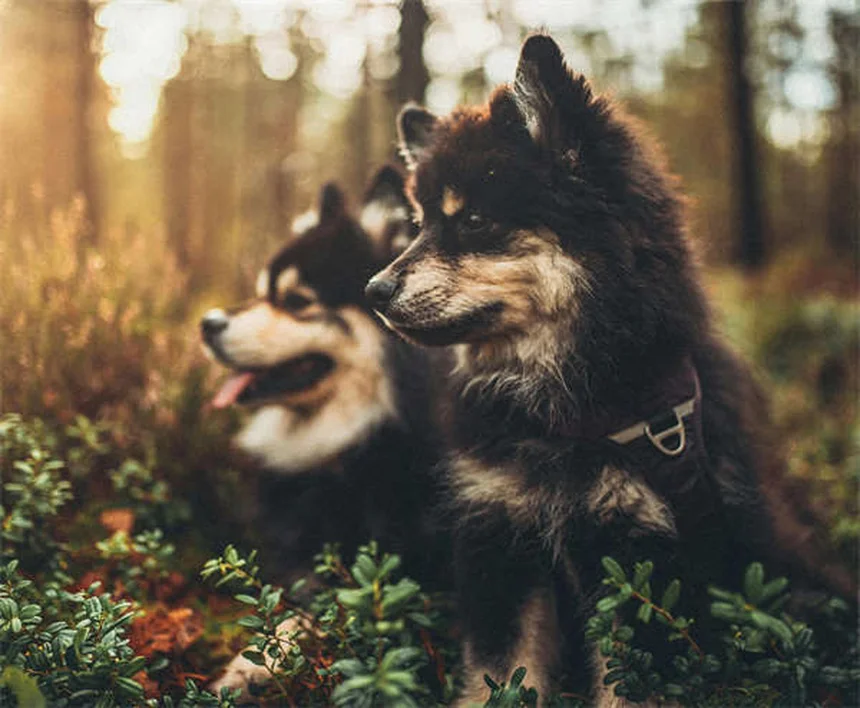Advertisement
What is pica in dogs? Pica is when your dog compulsively eats non-food items - and yes, it's as dangerous as it sounds! From personal experience working with hundreds of dogs, I can tell you this isn't just quirky behavior. When your pup swallows socks, rocks, or even poop (the grossest form called coprophagia), they're risking life-threatening intestinal blockages or poisoning.The good news? We've got solutions. Whether your dog's pica stems from medical issues, anxiety, or just plain boredom, there are proven ways to manage it. I'll walk you through the 7 most common warning signs, what causes this strange behavior, and exactly what to do about it. First rule: if you catch your dog eating something weird, call your vet immediately - this isn't something to wait out!
E.g. :10 Essential Tips for Walking Your Dog in Summer Heat Safely
- 1、Understanding Pica in Dogs: The Basics
- 2、Spotting the Signs: How to Recognize Pica
- 3、Digging Deeper: What Causes Pica?
- 4、Getting Help: Diagnosis and Treatment
- 5、Living With Pica: Management Strategies
- 6、Prevention Is Better Than Cure
- 7、Beyond the Basics: Exploring Pica's Hidden Aspects
- 8、The Human Factor in Canine Pica
- 9、Innovative Solutions for Stubborn Cases
- 10、When to Seek Professional Help
- 11、FAQs
Understanding Pica in Dogs: The Basics
What Exactly Is Pica?
Ever caught your dog munching on something weird like socks or rocks? That's pica - when dogs eat non-food items consistently. We're not talking about casual chewing here - they actually swallow these objects!
From my experience as a pet owner, I've seen dogs eat the strangest things: underwear, plastic bags, even remote controls! While it might seem funny at first, this behavior can be super dangerous. Imagine swallowing a rock - that's exactly what your pup is doing! The most common items include metal, plastic, cloth, garbage, rocks, and yes... poop (we'll get to that gross topic later).
Why Do Dogs Develop This Weird Habit?
Here's something fascinating - dogs often go for items that smell like their owners. That's why your dirty socks and underwear are like gourmet treats to them! But why do they do this?
Pica can stem from several causes:
- Psychological factors (boredom, anxiety)
- Medical conditions
- Nutritional deficiencies
Spotting the Signs: How to Recognize Pica
 Photos provided by pixabay
Photos provided by pixabay
Visible Symptoms You Can't Miss
Catching your dog in the act is the most obvious sign, but there are other red flags. Did you know that bad breath could indicate pica? Here's a quick checklist of symptoms:
| Symptom | What It Might Mean |
|---|---|
| Vomiting | Possible obstruction or irritation |
| Straining to poop | Blockage in intestines |
| No appetite | Stomach discomfort |
| Broken teeth | From chewing hard objects |
I once had a client whose Labrador ate an entire towel - the dog showed all these symptoms before we discovered the problem!
The Grossest Form of Pica: Coprophagia
Let's talk about the elephant in the room - poop eating. Why do some dogs find feces so appetizing? In puppies and nursing mothers, this behavior is actually normal. But in adult dogs, it might signal:
- Nutritional deficiencies
- Attention-seeking behavior
- Anxiety issues
Digging Deeper: What Causes Pica?
Medical Conditions Behind Pica
Did you know certain illnesses can literally make your dog eat dirt? Conditions like anemia or diabetes can trigger pica because the dog's body isn't getting proper nutrients. Here are some medical culprits:
Inflammatory bowel disease - Makes dogs eat strange things to soothe their upset stomachs.
Liver disease - Affects nutrient absorption.
Parasites - Steal nutrients, leaving dogs hungry for non-food items.
Remember my friend's Beagle who kept eating dirt? Turns out he had iron deficiency anemia - after treatment, the dirt-eating stopped!
 Photos provided by pixabay
Photos provided by pixabay
Visible Symptoms You Can't Miss
Not all pica is medical. Sometimes it's about psychology. High-energy breeds like Labradors often develop pica when they're:
- Bored
- Underexercised
- Anxious when left alone
Getting Help: Diagnosis and Treatment
How Vets Diagnose Pica
When you bring your sock-eating pup to the vet, what happens? First, they'll do a complete physical exam. Then comes the detective work:
Blood tests check for anemia or organ issues.
X-rays reveal any swallowed objects.
Ultrasounds examine the digestive tract.
Fecal tests look for parasites.
I always tell clients - don't wait until symptoms appear if you see your dog eat something strange. Early intervention prevents serious complications!
Treatment Options That Actually Work
Treatment depends on the cause. For medical issues, we treat the underlying condition. For behavioral pica, we might use:
Behavior modification - Training techniques to redirect chewing.
Environmental management - Dog-proofing your home.
Medication - For severe anxiety cases.
One success story: A German Shepherd with severe pica responded amazingly to puzzle toys stuffed with treats - it kept his mouth busy with appropriate items!
Living With Pica: Management Strategies
 Photos provided by pixabay
Photos provided by pixabay
Visible Symptoms You Can't Miss
Managing pica is about creating a safe environment and routine. Here's what works:
1. Supervise constantly - Use baby gates if needed.
2. Provide plenty of exercise - A tired dog is less likely to eat weird stuff.
3. Use food puzzles - Mental stimulation reduces boredom chewing.
My golden rule? If you wouldn't want it in your dog's stomach, don't let them have access to it!
Natural Remedies Worth Trying
Before jumping to medication, consider these natural approaches:
Pheromone diffusers (like Adaptil) reduce anxiety.
Probiotics improve gut health.
Bitter sprays make items taste unpleasant.
Coprophagia deterrents make poop taste bad (yes, they exist!).
Remember - these work best when combined with other management strategies. There's no magic bullet for pica!
Prevention Is Better Than Cure
Puppy-Proofing Your Home
An ounce of prevention is worth a pound of cure, especially with pica. Here's how to dog-proof:
Keep laundry behind closed doors.
Use trash cans with secure lids.
Store shoes in closets.
Pick up yard debris regularly.
Think like your dog - if they can reach it, they might eat it!
The Power of Early Training
Teaching "leave it" and "drop it" commands can literally save your dog's life. Start young and be consistent. I recommend:
5-minute training sessions daily.
High-value treats as rewards.
Gradually increasing difficulty.
With patience, most dogs learn these crucial commands. And trust me - you'll be glad you put in the effort when your dog drops that chicken bone they found on your walk!
Beyond the Basics: Exploring Pica's Hidden Aspects
The Surprising Connection Between Pica and Breed
Did you know some dog breeds are more prone to pica than others? While any dog can develop this condition, certain breeds seem genetically predisposed. Labrador Retrievers top the list - their famous "mouthiness" and food obsession make them prime candidates for swallowing inappropriate items.
I've worked with dozens of Labs who've eaten everything from golf balls to jewelry. Their strong retrieving instinct combined with that "soft mouth" trait creates the perfect storm for pica. Other high-risk breeds include:
| Breed | Common Pica Items |
|---|---|
| Beagles | Socks, underwear |
| Dachshunds | Plastic items |
| Poodles | Paper products |
But here's something fascinating - small breeds often target different objects than large breeds. While big dogs go for shoes and towels, little guys tend to eat things like hair ties and rubber bands. Size definitely matters when it comes to pica risks!
The Seasonal Surge in Pica Cases
Would you believe pica cases spike during certain times of year? I've noticed a clear pattern in my practice that might surprise you. Holiday seasons bring a flood of pica emergencies - think about all those tempting decorations and wrapping materials!
Christmas is particularly dangerous with tinsel, ornaments, and ribbon causing countless intestinal blockages. Halloween brings chocolate wrappers and glow sticks. Even Easter has its hazards with plastic grass and those tiny toy-filled eggs. I always tell clients - if you're celebrating, double-check what's within your dog's reach!
Summer months see different pica triggers. Dogs eat more grass and outdoor debris when the weather warms up. And let's not forget about Fourth of July - the stress from fireworks can trigger anxiety-related pica in sensitive dogs. Being aware of these seasonal patterns helps us stay one step ahead of potential problems.
The Human Factor in Canine Pica
How Our Habits Influence Our Dogs
Here's an uncomfortable truth - we often unknowingly encourage pica behaviors in our dogs. That quick game of tug-of-war with your sock? You might be teaching your pup that fabric items are fun to chew. Those table scraps you "accidentally" drop? They reinforce scavenging behavior.
I've seen countless cases where simple changes in human behavior dramatically reduced pica incidents. Try these easy fixes:
• Store your dirty laundry in a hamper with a lid
• Eat meals at the table, not on the couch where crumbs fall
• Put away shoes immediately instead of kicking them off by the door
• Use dog toys for play, never household items
Remember, dogs don't understand the difference between "your" stuff and "their" stuff - they just know what smells interesting and feels good to chew!
The Emotional Mirror Effect
Here's something profound - dogs often reflect our emotional states. Have you noticed your dog acting out more when you're stressed? That's not coincidence! Our four-legged friends pick up on our anxiety, and some express it through pica behaviors.
I worked with a rescue dog who only ate drywall when his owner was away on business trips. After installing a camera, we discovered the dog started chewing the moment the owner's car pulled out of the driveway. The solution? We implemented a calming pre-departure routine and used pheromone diffusers. Within weeks, the drywall chewing stopped completely!
This case taught me an important lesson - sometimes we need to look beyond the dog to solve pica problems. Our own habits and emotional states play a bigger role than we realize in our pets' behavior.
Innovative Solutions for Stubborn Cases
Tech Gadgets That Help Manage Pica
In today's digital age, we have more tools than ever to combat pica. Have you considered using a pet camera with two-way audio? These allow you to catch pica behaviors in real-time and intervene remotely. I've seen great success with clients using:
Automatic treat dispensers - Reward good behavior when you're not home
Activity monitors - Track when chewing episodes occur
Bark-activated cameras - Alert you to potential problems
One of my favorite tech solutions is the "smart" dog bowl that only opens for your pet's microchip. This prevents scavenging while you're away while still allowing access to food and water. Technology won't solve pica alone, but it can be a powerful tool in your management arsenal!
The Power of Scent Work
Here's an unconventional approach that's gaining popularity - using your dog's nose to redirect pica tendencies. Scent work channels that natural curiosity into productive activities. Instead of eating random objects, dogs learn to search for specific scents.
I recently trained a Boxer who was obsessed with eating rocks to search for essential oil-scented cotton balls instead. We started with easy finds and gradually increased difficulty. Within months, he completely lost interest in rocks and now happily spends hours "working" scent puzzles. The best part? This activity tires him out mentally and physically, reducing all problematic behaviors.
Why does this work so well? It taps into dogs' natural instincts in a controlled, safe way. Plus, it builds confidence and strengthens your bond. Every dog can benefit from some form of scent work - even if it's just hiding treats around your living room!
When to Seek Professional Help
Red Flags That Demand Immediate Attention
How do you know when pica has crossed from quirky habit to serious danger? Some situations absolutely require professional intervention. If your dog shows any of these warning signs, don't wait - get veterinary help immediately:
• Repeated vomiting with no food coming up
• Refusal to eat for more than 24 hours
• Signs of abdominal pain (whining, arched back)
• Blood in stool or vomit
• Lethargy lasting more than a day
I can't stress this enough - intestinal blockages can become life-threatening within hours. That "wait and see" approach could cost your dog's life. When in doubt, err on the side of caution and get professional evaluation.
Finding the Right Specialist
Not all vets have equal experience with pica cases. When chronic pica resists standard treatments, consider seeking out these specialists:
Veterinary behaviorists - For complex psychological cases
Internal medicine specialists - For underlying medical conditions
Nutritionists - For dietary-related pica
Rehabilitation therapists - For alternative treatment approaches
The right professional can make all the difference. I recently referred a difficult case to a veterinary behaviorist who identified an undiagnosed compulsive disorder. With proper medication and behavior modification, what seemed like hopeless pica was brought under control. Don't be afraid to seek specialized help when needed!
E.g. :Pica in Dogs | PetMD
FAQs
Q: Can pica in dogs be cured?
A: The answer depends on what's causing your dog's pica. If it's due to a medical condition like anemia or parasites, treating that underlying issue often stops the behavior completely. However, for dogs with behavioral pica (from anxiety or boredom), it's more about management than cure. We've had great success using a combination of environmental changes, training, and sometimes medication. The key is consistency - it might take weeks or months of work. My Labrador client who ate rocks? After six months of behavior modification and increased exercise, he's now rock-free!
Q: Why does my dog eat poop (coprophagia)?
A: Ah, the million-dollar question! While it's disgusting to us, coprophagia is actually common in dogs. Puppies and nursing moms often do this naturally. But if your adult dog is eating poop, it could signal nutritional deficiencies, anxiety, or just plain boredom. Some dogs do it for attention (negative attention is still attention!). First step? Get your vet to rule out medical causes. Then we can work on behavior solutions like keeping the yard clean, using deterrent sprays, or changing feeding routines.
Q: What household items are most dangerous for dogs with pica?
A: After 10 years in veterinary medicine, I've seen dogs eat everything from underwear to Christmas ornaments! The most dangerous items are small objects that can cause blockages (socks, underwear, coins), sharp items (bones, needles), and toxic materials (certain plants, batteries). One client's Dachshund needed emergency surgery after eating a corn cob - it completely blocked his intestines. My rule? If it's smaller than your fist and not food, assume your dog might try to eat it!
Q: How can I stop my dog from eating rocks and dirt?
A: Rock-eating drives many dog owners crazy! First, have your vet check for nutritional deficiencies. Then try these proven methods: use a basket muzzle during walks, teach a solid "leave it" command, and provide acceptable chew alternatives. For my rock-loving patient, we switched to rubber chew toys chilled in the freezer - the cold texture satisfied that craving. Also, more exercise! A tired dog has less energy for destructive chewing.
Q: Are certain dog breeds more prone to pica?
A: Absolutely! Labrador Retrievers top the list (their "soft mouths" make them prone to carrying and swallowing objects). Other high-risk breeds include Dachshunds, German Shepherds, and terriers. But any dog can develop pica if they're bored, anxious, or have medical issues. The common thread? These breeds tend to be high-energy and mouth-oriented. The solution isn't less love for these breeds - just more supervision and appropriate outlets for their chewing needs!







